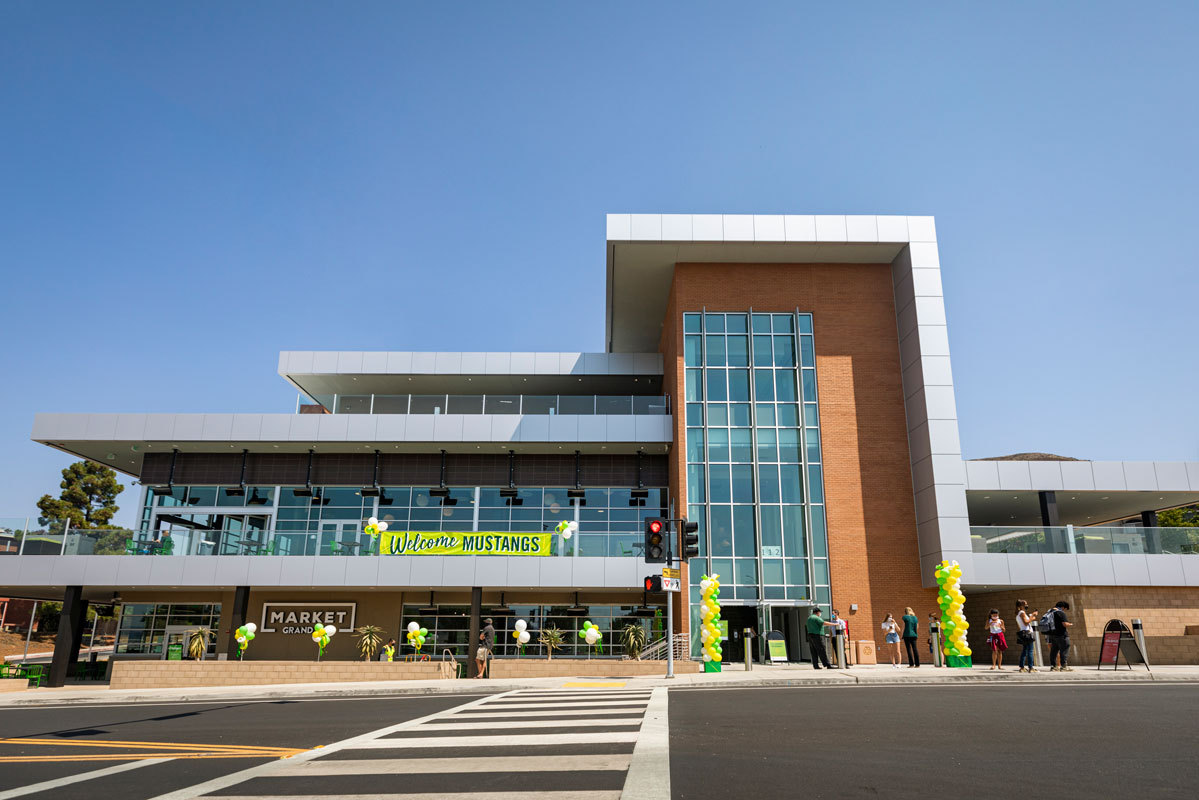All eight of Vista Grande’s second-floor restaurants earned Certified Green Restaurants status from the Green Restaurant Association (GRA) last month, according to Campus Dining.
The restaurants received recognition for meeting stringent environmental standards across multiple categories and for showing a commitment to sustainable practices.
The GRA evaluates food service operations every three years on several criteria: energy, water, waste, reusables and disposables, chemicals, food and building and equipment, Sustainability Coordinator Kaitlin Gibbons wrote in an email to Mustang News. Points are awarded in each of these categories, creating a comprehensive assessment of a venue’s sustainability efforts.
Key initiatives undertaken by Vista Grande’s campus dining played a crucial role in securing this status.
These efforts included incorporating Leadership in Energy and Environmental Design attributes into the physical building, using energy-efficient appliances, offering a significant percentage of plant-based menu options and maintaining an established recycling and composting program. These measures collectively contributed to meeting the GRA’s standards.
The GRA certification represents a significant achievement for Vista Grande’s second-floor restaurants, highlighting the hard work and dedication of the campus dining team to sustainability, Gibbons added.
The 1901 Marketplace and the first-floor venues of Vista Grande have yet to achieve Certified Green Restaurant status, but there are plans to possibly revisit and evaluate these areas in the future, Gibbons said. Currently, the certification effort has been focused solely on the second-floor restaurants at Vista Grande, she said.
This phased approach allows campus dining to concentrate resources and efforts on the green criteria where they can make the most immediate impact, Gibbons added.
Campus dining’s next steps in sustainability include building on existing programs and increasing participation in initiatives like the Reusepass and Validfill reusables programs. These programs are designed to reduce single-use plastics and encourage the use of reusable containers, significantly lowering the campus’s environmental footprint.
Continuing to offer a diverse array of plant-based menu options is also a priority, as plant-based diets are generally more sustainable and have a lower environmental impact compared to meat-based diets, Gibbons wrote.
In addition to these efforts, there is a strong focus on food waste reduction and recovery.
This involves not only minimizing waste generated by dining operations, but also ensuring that any surplus food is diverted from landfills. The surplus will instead be utilized in beneficial ways, such as through composting or donation programs, Gibbons said.
“Our goal is to continue building on our existing sustainability programs,” Gibbons wrote.

